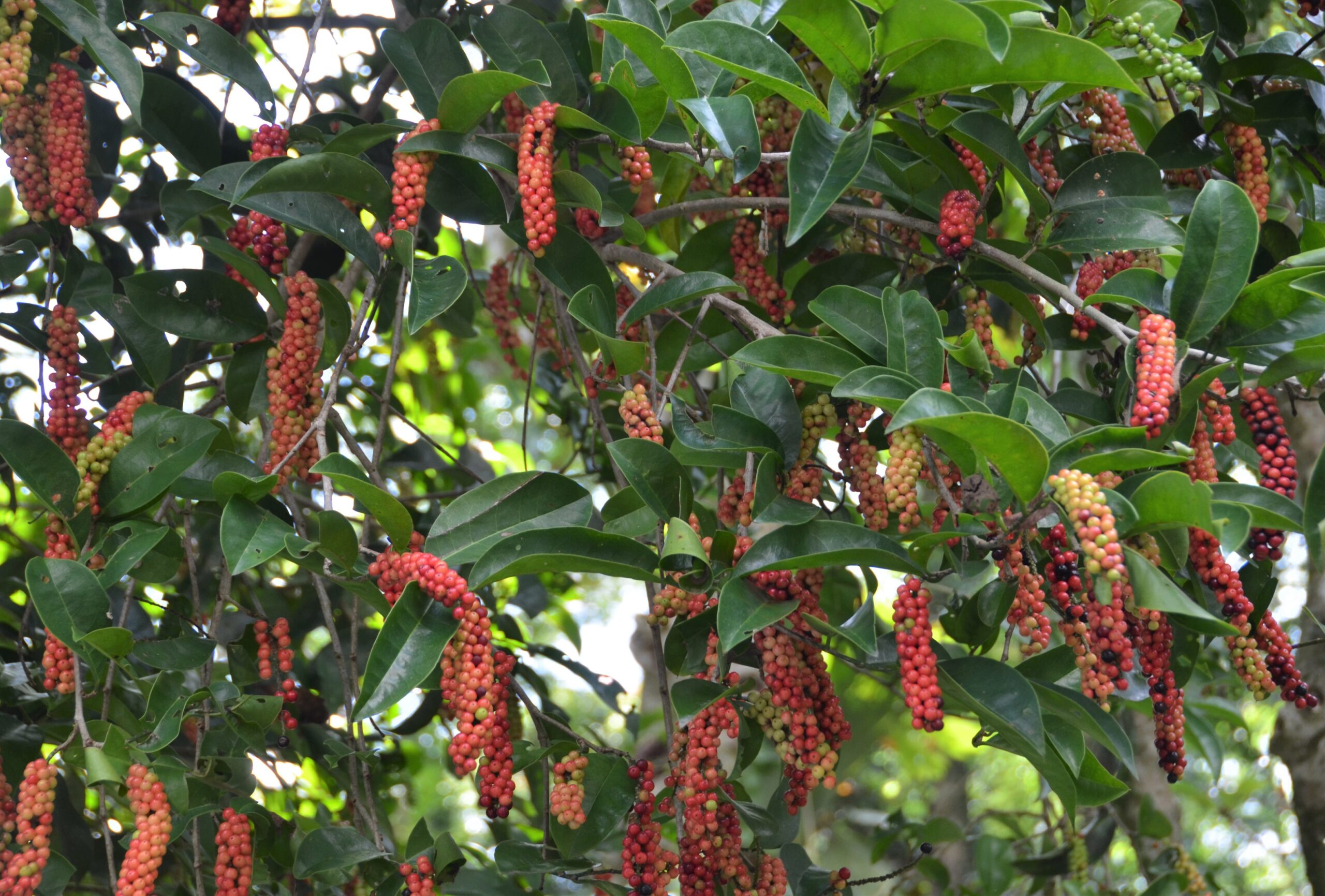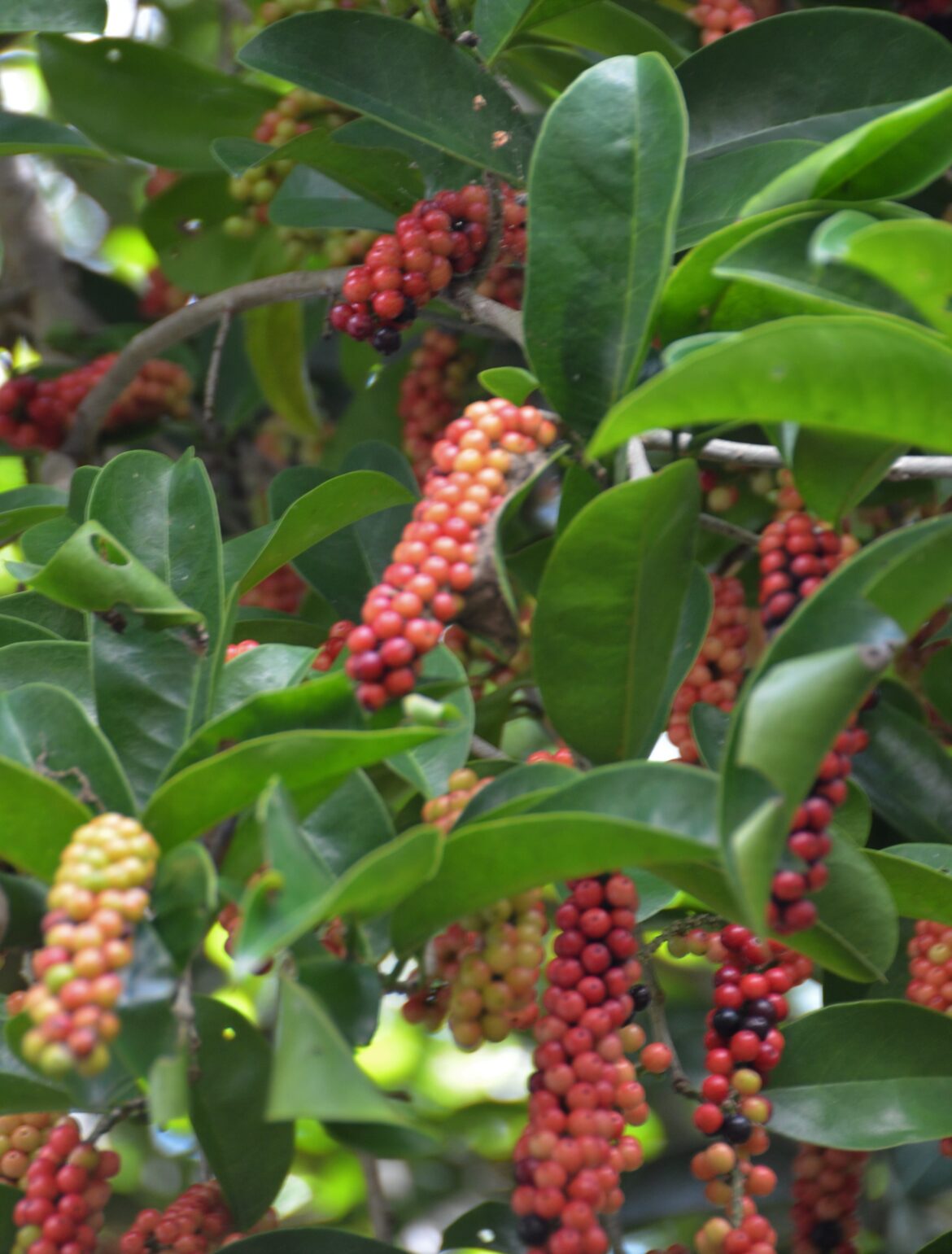Text and Photos by Henrylito D. Tacio
If you have become health conscious recently but still cannot give up alcohol, don’t push yourself harder. You can count on fruit wines, which can be considered as God-given products as they can gratify your taste buds and likewise build up a healthier body.
You can get the much-needed calories for the day by drinking an entire bottle of fruit wine. The good thing is that you also don’t gain weight if you do so. Some studies have shown that moderate drinking of fruit wines can also reduce cancer risk.
One of the identified healthy fruit wines by the Bureau of Agricultural Research (BAR) of the Department of Agriculture (DA) is bignay wine, which comes from bignay (known in the science world as Antidesma bunius).
Bignay wine has a deep red color, aged in a glass vat for at least six months. The wine has a distinct fruity aroma and smooth flavor that provides consumers with a delightful experience.
Below is the process of making bignay wine, based from an output of DA-BAR funded project and implemented by the Institute of Food Science and Technology of the College of Agriculture at the University of the Philippines at Los Baños (UPLB):
The following materials are needed in bignay wine processing: bignay fruits, sugar (refined), wine yeast, sodium metabisulfite, cotton, flasks, funnel, gallon jars, tray/basin, strainer, wire needle, paddle, graduated cylinder, fermentation lock, wine bottles, cork or aluminium cap, cap seal, water bath, waring blender, pH meter, and hand refractometer.
First of all, make a starter preparation. This is done by pasteurizing 10% of the total volume of the “must” in boiling water for 30 minutes. Cook to 40°C to 45°C. Inoculate with pure culture of wine yeast. Ferment for 18-24 hours and inoculate in the prepared “must.”
To prepare “must,” wash fully ripe fruits (1 kilogram) and drain. Macerate by hand or use a fruit pulp pulper. Add appropriate volume of water (2 liters) and adjust sugar content to 20°Brix (dry wine) or 25°Brix (sweet wine) by addition of refined sugar.
Add 5 milliliters of 10% sodium metabisulfite per gallon of “must” to destroy spoilage microorganisms. Cover the jar properly and stand for 16-18 hours at room temperature.
Add the starter and ferment for four days. Filter the “must” to separate the seeds and pulp. Transfer the liquid in clean fermentation jars and cover with a fermentation lock. Continue anaerobic fermentation for three weeks.
After three weeks, siphon the wine using tygon tubing. Care must be exercised not to make too much movement on the jar so as not to disturb the sediments.
Add 5 milliliters of 10 sodium metabisulfite per gallon of wine. Fill the jars with wine to its brim and cover tightly to prevent access of oxygen. Store in a cool (20°C), dry place for at least 6 months to mature.
When it is already matured, place in clean wine bottles and cover with work or similar closure. Seal with paraffin-glycerine mixture or plastic seal. Finally, cover the bottle with a cap seal.
Bignay is native to Southeast Asia (including the Philippines) and northern Australia. In the Philippines, it is also known as “bugnay,” “bignay,” and currant tree. Other names include Chinese laurel, Queensland cherry, salamander tree, and wild cherry.
The tree fruits in clusters. Each bunch of the fruits ripen unevenly, so the fruits in a bunch come in different colors. The fruit looks like a small grape and is about the size of a toy gun pellet.
The skin of the fruit has red juice while the while pulp has colorless juice. The fruit, which contains a light-colored stone, has a sour taste similar to that of the cranberry when immature and a tart but sweet taste when ripe.
The ripe fruits can be cooked or consumed fresh. The green fruits, on the other hand, are used to flavor fish soup dishes. It can be utilized, too, as sauce for fish dishes.
The pulp is used in desserts such as bavarois, cakes, and ice cream. The young and tender leaves are consumed with rice. In China, leafy shoots are used for making tea. Leaves are also used in salads.
Some parts of bignay have medicinal properties. The leaves are used to cure snakebites. In Vietnam, bark and stem are used for treating fevers. In India, the solution is prepared from boiled leaves which are used for baths to treat painful joints.
As it has some anti-inflammatory properties, bignay can help treat skin diseases such as boils, mosquito bites, allergies, and acne. The fruit paste may be applied to wounds.
Some precautions: The bark has toxic alkaloid, which is poisonous. The roots are also poisonous. Pregnant women should not use it because it can cause abortions.
Aside from wine, bignay fruits can be made into preserves, jams and combined with other fruits for making jelly.
Bignay fruit contains provitamin A, vitamin C, vitamin B1, vitamin E, iron, minerals, fiber, potassium, and phosphorus. It is also a natural source of antioxidants.
“The natural anti-oxidative properties of this fruit, due to the presence of catechins, enable it to fight against the free radicals present in the human body,” stylecraze.com reports. “The excessive presence of these radicals can result in premature onset of wrinkles, fine lines, and even cause cancer. You can keep all these at bay by consumption of bignay as whole fruit or as tea.”


If you have hypertension, bignay can help your blood pressure lower. “Bignay, in the form of fruits and leaves, has the potential to keep the levels of blood pressure under control,” stylecraze.com says. “Thus, it could be consumed by people suffering from hypertension to thwart off various hypertension-induced cardiovascular issues.”
Bignay may also do good for your colon. “Bignay tea is a well-known natural colon cleanser,” stylecraze.com says. “Therefore, you can make use of this tea to eliminate unwanted toxins from your body. The natural detoxifying properties of the tea can help you lose weight while helping you look younger. It is also known to improve digestion and thus, be beneficial for your colon.”
Growing bignay
Bignay can be grown using seeds, but it is discouraged as the seedlings may turn out to be male. Female seedlings, on the other hand, may not bear for a number of years. Thus, vegetative propagation is preferred.
The tree is readily multiplied by cuttings, grafting, or air-layering. The air layers can bear fruits within three years after planting. When grafting is used, it should be done during the rainy season, as scions remain dormant in dry weather.
The trees should be planted 40 to 45 feet (12-14 meters) apart each way. One male tree should be planted for every 10 to 12 female trees to provide cross-pollination.
Here’s how to plant it: Dig a hole as deep as the current root ball plus extra 20%, put in a prepared hole with organic matter, humus, and dried leaves mixed with some soil. Place the vegetative planting material inside the hole and cover it. Don’t push the soil too hard but not too much light because it won’t be stable. After this, put mulch to keep moist on the soil.
Water the newly-planted bignay every day (do the watering in the morning). Wind protection is necessary during the growing stage. Otherwise, bignay trees require very little cultural attention.
Yield varies greatly from tree to tree – if they are grown from seeds. In Florida, a mature tree has produced 15 bushels of fruits in a season. One very old tree has been reported to produce 22 bushels, yielding 72 gallons (274 liters) of juice.

